Intro Progress
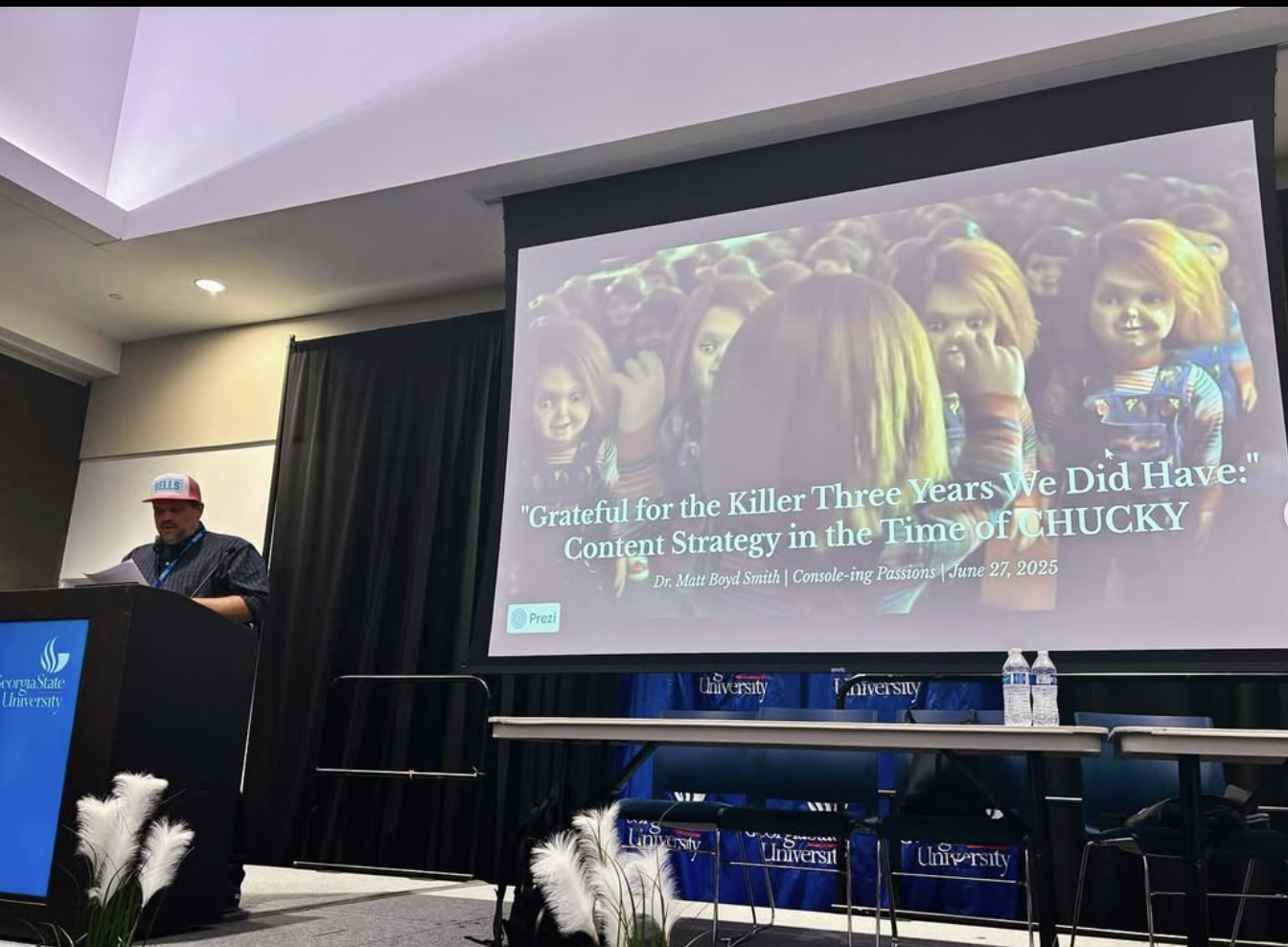
Back to Work/Back to Blog
And my work is to explain how popular formulas — with examples of paranormal reality, true crime, and teen horror/thrillers — work as part of these moments of adjustment over the past twenty-five years. So, I guess I’ll see how the book starts going from this point on.
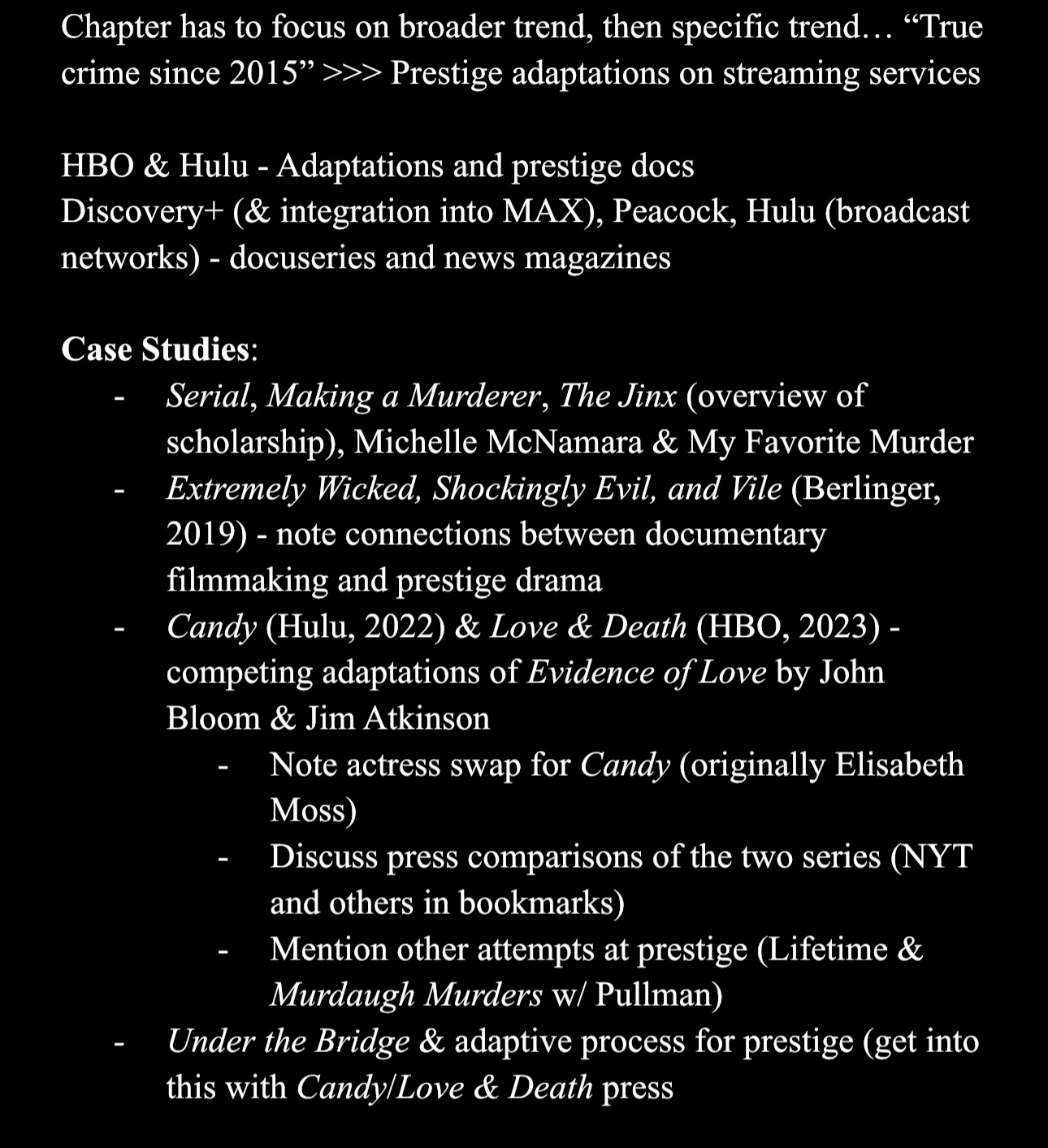
Starting the True Crime Chapter
When I sit down to do the work, I usually start with some rough ideas like this, including things I need to make sure to find and make note of before I write about each case study.
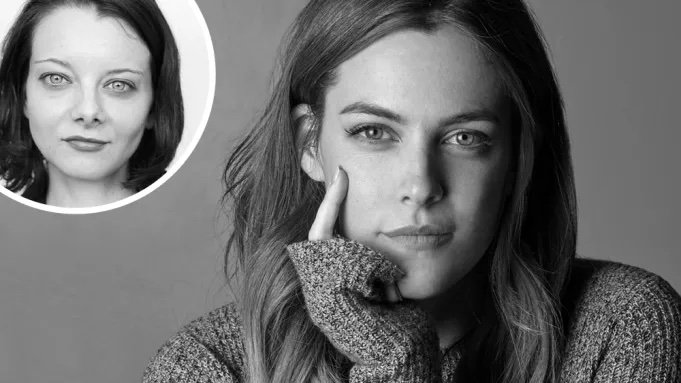
Rebecca Godfrey, the Real Person and the Character
One thing that has become clear while looking into the adaptive process for Under the Bridge is that the show’s co-creator, Quinn Shephard, worked very hard on honoring the memory of Rebecca Godfrey, both as a character in the series and as a real human who lived, researched, and wrote about the View Royal case. Shephard and Godfrey worked closely alongside one another while developing the television series, with Shephard even moving to upstate New York to be closer to Godfrey as she battled cancer, allowing for deep collaboration in not only adapting the book, but also a retrospective approach to all of Godfrey’s research materials from two decades prior.
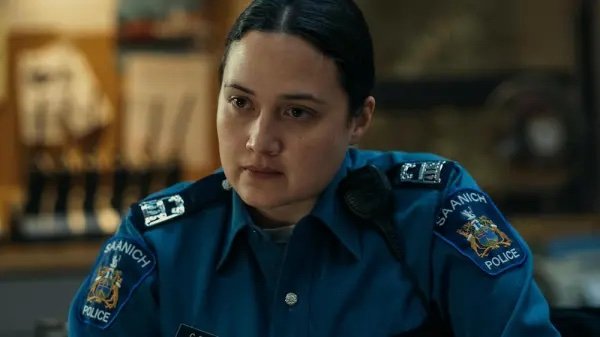
Under the Bridge: Cam Bentland
Read against Warren Glowatsky, one of the two main perpetrators of Virk’s murder, she is another person with ambiguous Indigenous identity, her First Nations heritage lost to the foster care and adoption system in ways that are all too familiar to members of those communities in Canada and the U.S. She is a law enforcement officer who, when read against the police force in View Royal, largely uninterested in Reena Virk’s disappearance to begin with, exposes the indifference of the legal system to people of color.
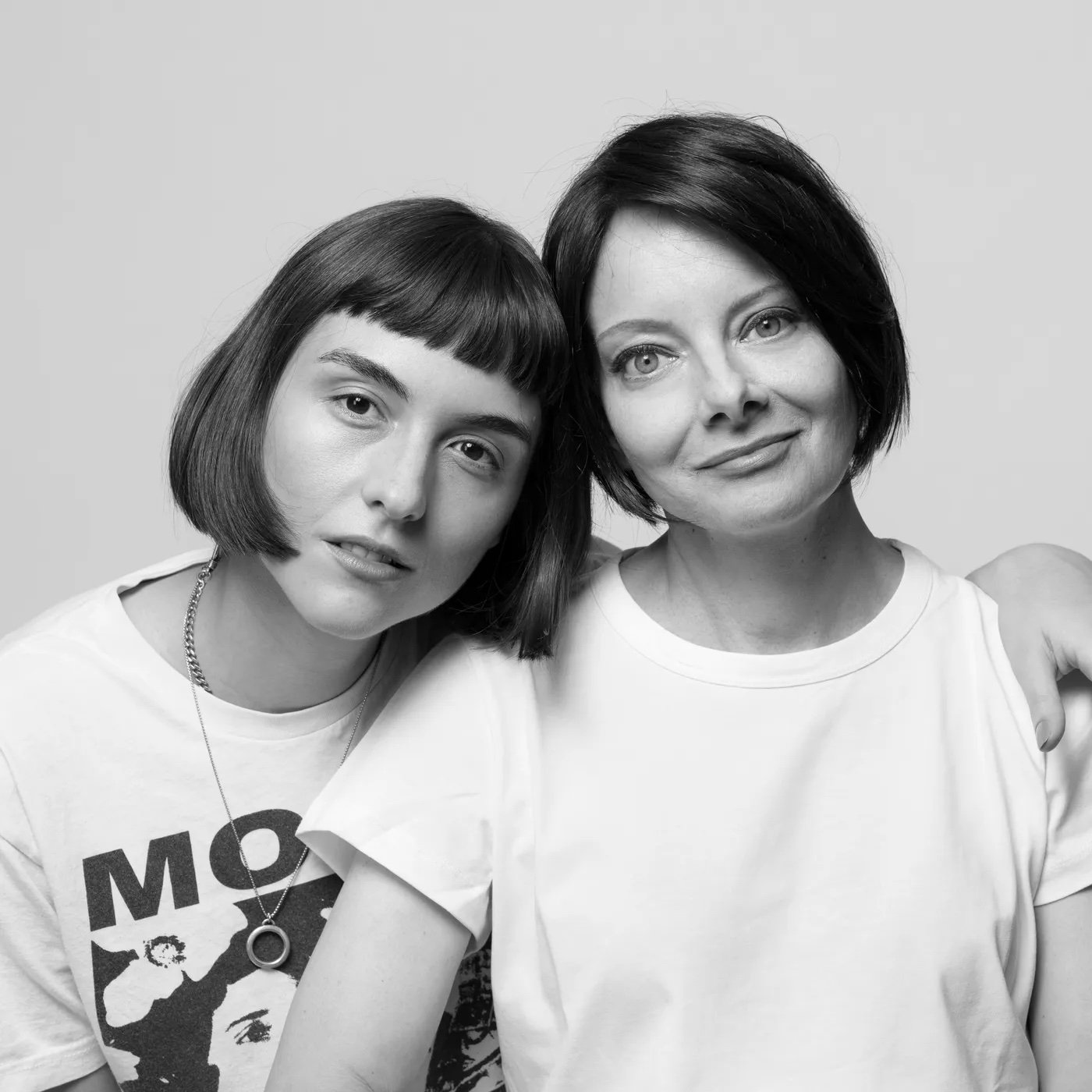
Adapting Rebecca Godfrey
The inner workings of the adaptive process are key to my focus, I think. I really want to understand how the prestige drama format functions relative to true crime, and I think some of it is a claim to reflexivity. This was apparent in the interview with Godfrey that I highlighted yesterday, at least as her own understanding of how the genre has shifted since the mid-2000s into a more respectable, reflective space. But I question how that works outside of fictionalized texts where this is made such an explicit point in the text itself, such as it is in Under the Bridge.
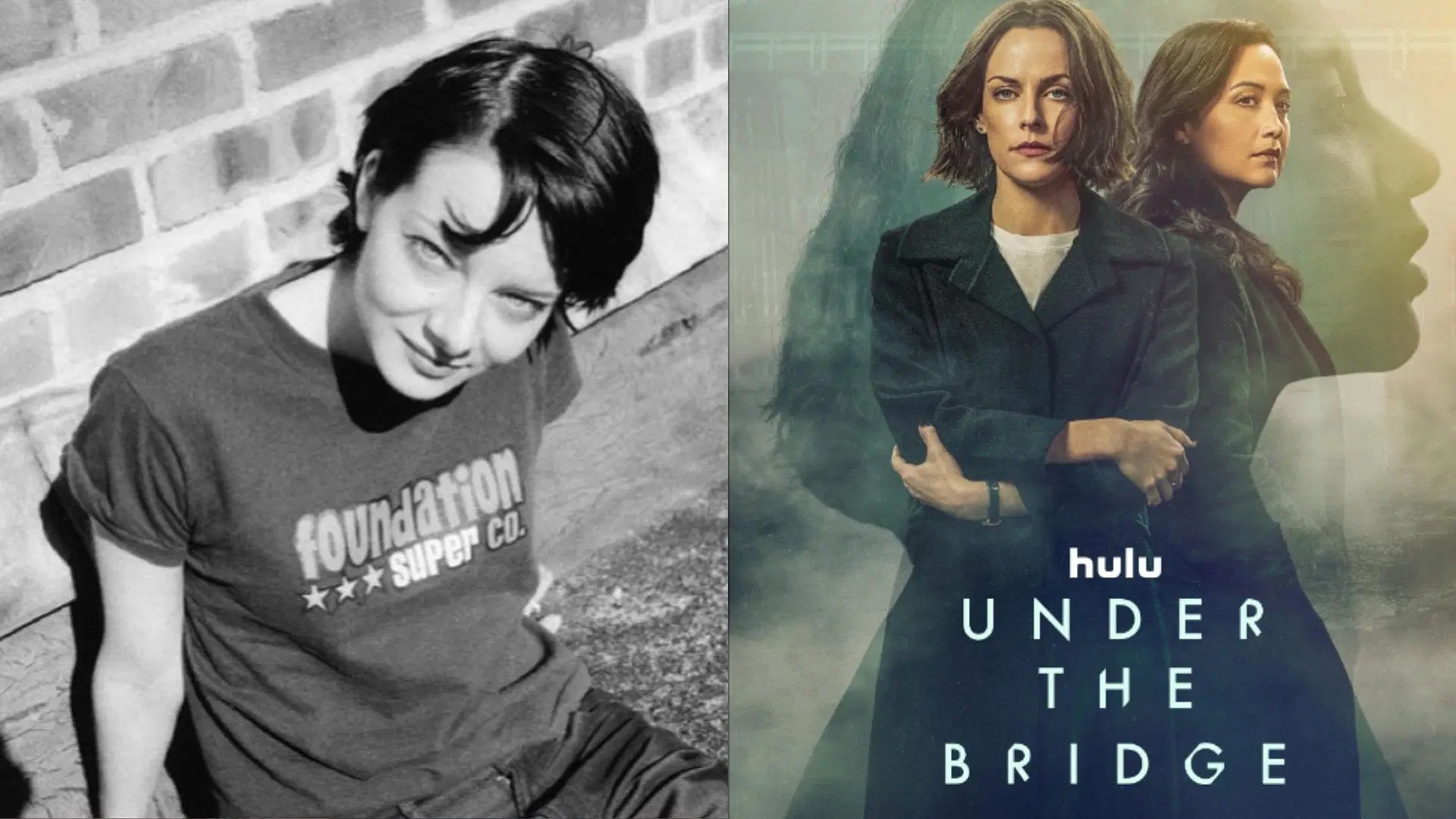
Under the Bridge & The New True Crime
In a brief 2019 conversation in Interview magazine, Godfrey was asked about the surge of interest in true crime since 2015 or so when it re-entered mainstream culture in a major way following the successes of the podcast Serial (2014-present), the HBO series The Jinx (2015; 2024), and the Netflix series Making a Murderer (2015; 2018).

'Cause Summer’s Here and the Time is Right for Writing in the Streets, Boy
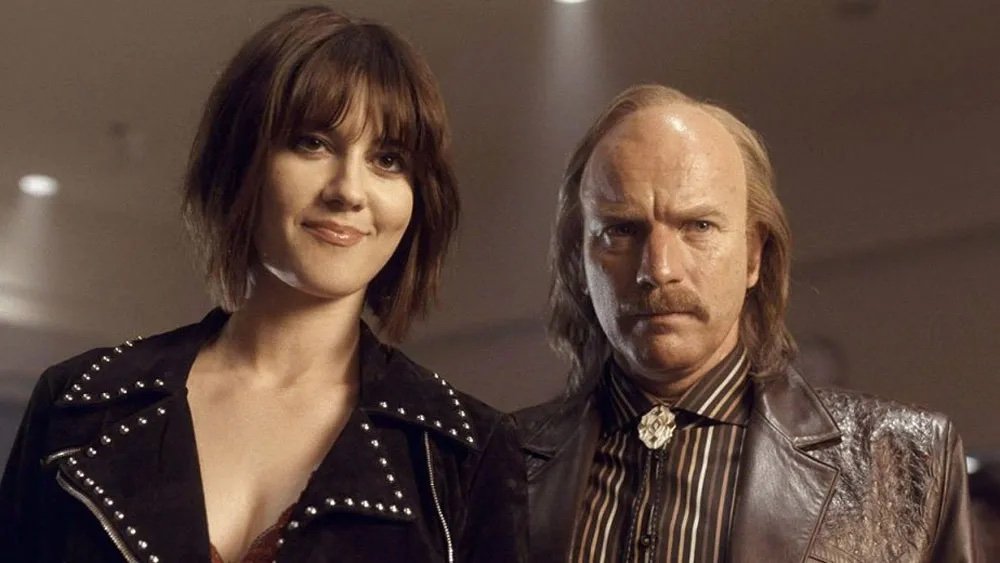
Reading About FARGO (still early)
But last night I read “Fargo and Cinema” by Sylvaine Bataille, and it has a very good bit of writing on the different ways the show connects to cinematic style broadly speaking, as well as specifically to the various parts of the Coens’ ouevre. While, again, much of the chapter is about the first two seasons - with some good analysis of how vastly intertextual those seasons are - it pointed out some of the ways season three also focuses on cinematic elements, especially in its use of screen style and genre tropes (as well as typically Coen-esque elements).
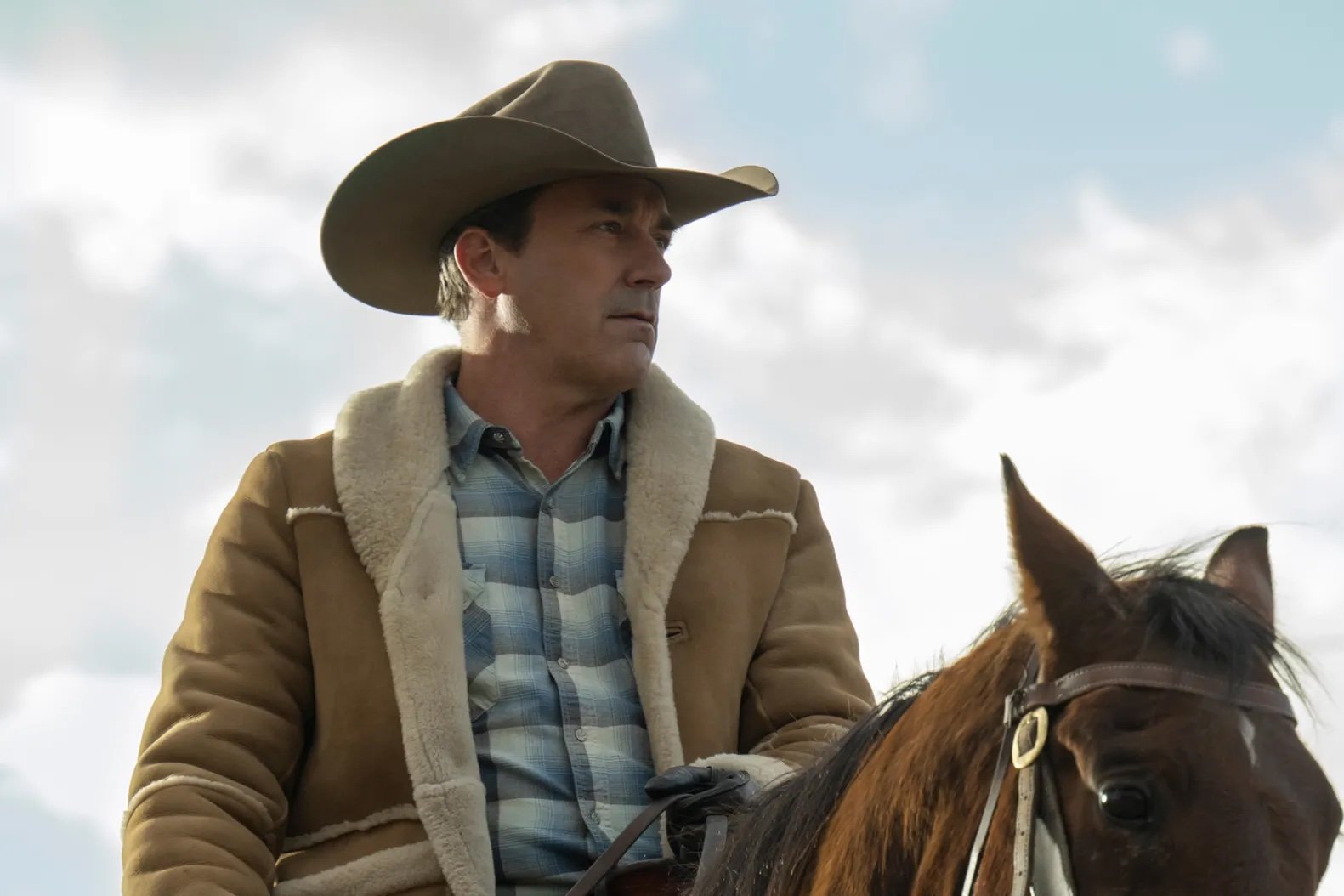
Fast-Tracking the FARGO Project
So, the good news is that I may actually be first out the gate with analyses of its most recent season, which had a whole lot to say about Trump’s America and the corruption of faith and government that sits at the dark heart of conservative political ideology in the United States.
Re-entering the Writing Path
